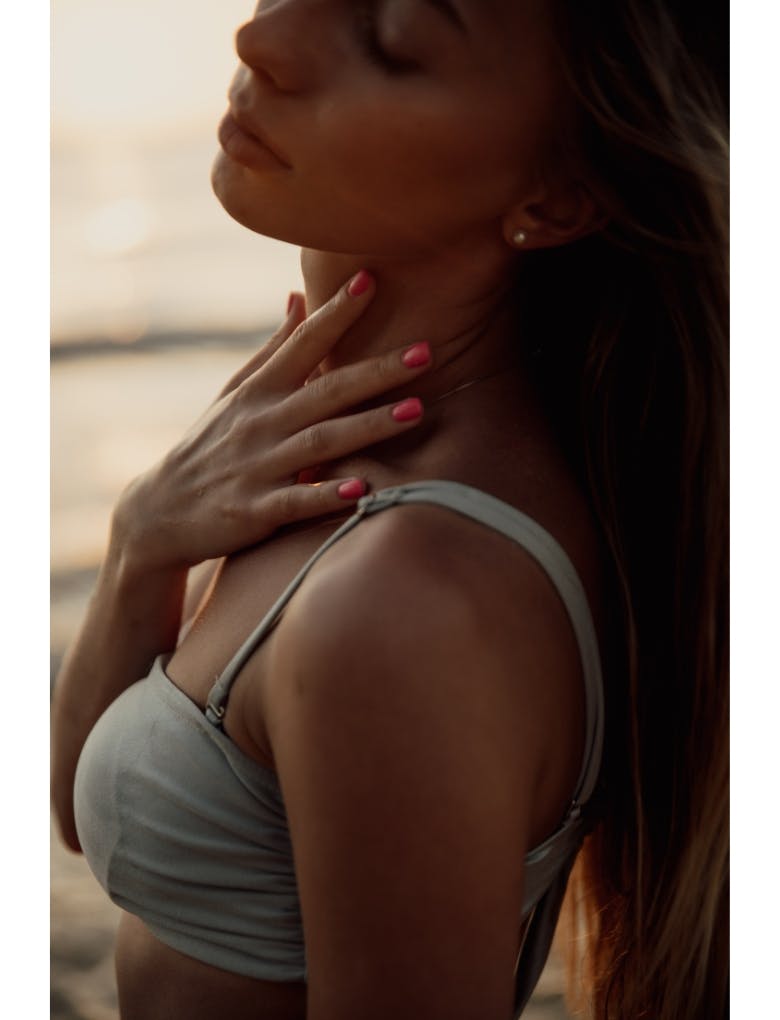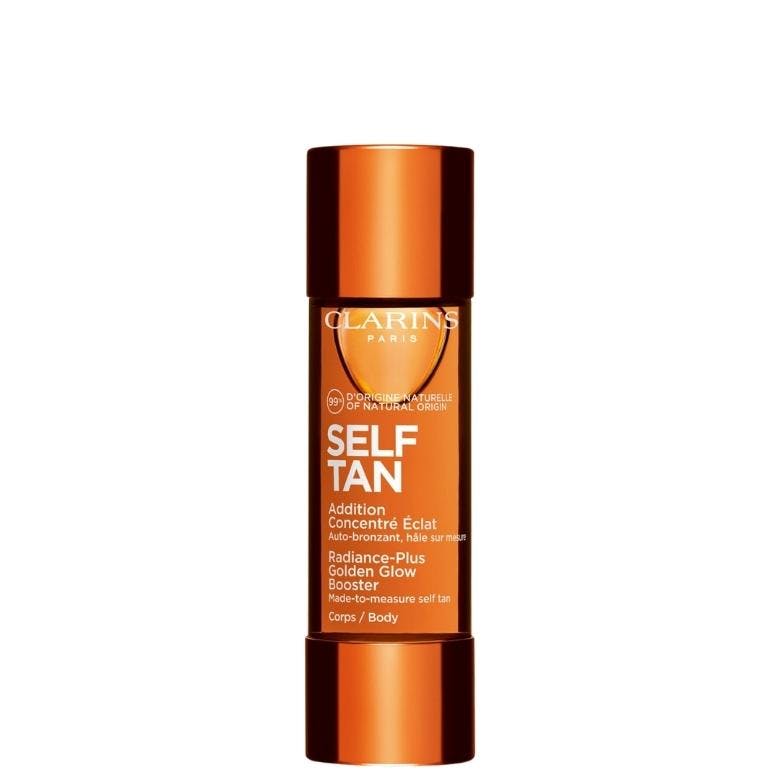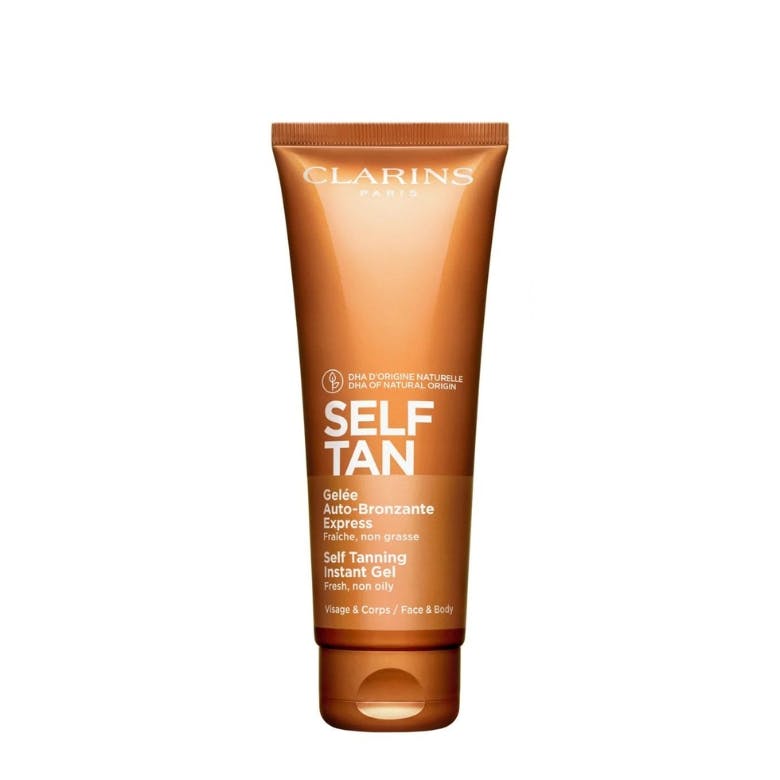Fake Tan Is The Beauty Boost For All Skin Types
8 minutes read
Fake tan has long held a bad reputation, threatening a streaky orange coverage with a strong giveaway scent. But how times have changed. So many advancements have been made in fake tan formulations that plenty of fail-safe options are on the market for all skin types. Plus, there are more fake tan shades than ever before. So, whether you are trying fake tan for the first time or want to improve your self-tanning skills, read on for everything you need to know about how to apply fake tan.
How does fake tan work?
The skin comprises two main layers: the epidermis (the top layer) and the dermis (the inner layer). Tan of any kind, whether produced by the sun or from a bottle, works on the epidermis – the surface of your skin. Fake tan first burst onto the scene in the 1960s, with products popping up promising a sunless golden glow. Uncoincidentally, this was around the same time scientists discovered how dangerous exposure to UV rays can be.
The magic ingredient fake tan contains is dihydroxyacetone (DHA), a non-toxic substance that reacts with the amino acids in your skin and produces a pigment called melanoidin. According to the NHS, DHA isn’t thought to be absorbed by the skin, working only on its very outer layer. On the other hand, tans achieved by exposure to UV rays are caused by increased melanin production in the skin. Sunbathing or using tanning beds, as we all know, can cause premature ageing and skin cancer, amongst other nasties, and there is no such thing as a safe UV tan.

Is fake tan bad for your skin?
In 2020 experts at the Scientific Committee on Consumer Safety declared that DHA tanning products are not a health risk; this is also the advice Cancer Research UK gave. However, this research does not relate to melanotan injections, which are unlicensed and illegal in the UK.
The US Food and Drug Administration has also labelled DHA safe for skin use. Still, while most researchers believe that DHA doesn’t penetrate beyond the very outermost layer of your skin, a 1998 FDA report found that small amounts can make their way to living cells. However, it needs to be clarified whether this is a point of concern. Also, when the FDA drew their conclusions, it was before the rapid rise in popularity of spray tanning, a process during which DHA could potentially be inhaled. While there is no substantial evidence to show that the current concentrations used in spray tan are dangerous, some doctors maintain that it’s good practice to protect your eyes, nose and mouth as a precaution and always apply in a well-ventilated area.
Whichever fake tan you opt for, follow the instructions carefully and always do a patch test before applying it to your entire body. It is always wise to talk to your doctor if you’re concerned about a particular product, especially if you have a medical condition such as contact dermatitis or eczema which could be irritated by it. And it’s worth noting that around two in every 100,000 people are allergic to DHA.
The most significant potential danger of fake tan is the mistaken belief that it can help protect your skin from the sun’s rays. People often ask if you can go on a sun bed with a fake tan on. Fake tan cannot protect you from UV rays, and wearing SPF is always essential when outside, no matter how much fake tan you wear. Advice on sunbeds remains pretty consistent across the board: they increase your risk of developing skin cancer and should be avoided at all costs.
Does fake tan age your skin?
Some people report that fake tan leaves their skin feeling dry; this is believed to be due to the reaction on your skin causing oxidative stress, but the long-term effects of this aren’t known. For many people, any dryness can be countered with the proper skincare. While dry skin is a factor as skin matures, it’s worth noting that far more significant factors contribute to skin ageing, such as sun exposure, stress, or smoking.
So, if you’re wondering: is fake tan bad for your skin? We’re afraid it’s not a black-and-white answer, and it’s important to remember while there currently isn’t any concrete evidence to suggest it is harmful, research remains ongoing.
If you prepare your skin well and moisturise daily, there will be less dryness.
Can you fake tan while pregnant?
As DHA isn’t thought to be absorbed by the body, it’s considered safe by the NHS to use fake tan creams and lotions when pregnant. Spray tans, though, are best avoided for the potential risk of inhaling anything nasty. However, do note that changing hormone levels during pregnancy can make your skin more sensitive than normal, and you may experience irritation or an allergic reaction. Yet another reason why the humble patch test is so important.
To know more about fake tan during pregnancy, read our guide.
Self-Tanner Masterclass with Clarins
Choosing a fake tan?
The brilliant developments made in fake tan over the years mean that there are tans suited to every specific skin concern.
Fake tan for dry skin
A moisturising fake tanner will hydrate and bronze in one fell swoop – just like this one.
Self-Tanning Milky Lotion, £24

This nourishing self-tanning lotion is packed with fig exact and aloe vera for super soft skin and a (fake) tan that lasts.
To help you keep your glow on, look for moisturisers containing other hydration heroes, such as cocoa or shea butter, to use after the product has settled in, and you’ve had your first shower (at least 8 hours after application but no more than 24 hours).
Fake tan for sensitive skin
Those with sensitive skin will be used to treading carefully when trying a new product and should look for fragrance-free formulations.
Utan Gentle Glow DHA-Free Mylk, £18

Try the world’s first oil-free, DHA-free and unscented fake tan. It’s great for those with allergies to Dihydroxyacetone and/or extremely sensitive skin.
Fake tan for mature skin
Got your skincare routine down and didn’t want a self-tanner throwing the unknown into the mix? Get a fake tan product that works with your regime, like glow boosters.
Radiance-Plus Golden Glow Boosters, £23

These magic glow boosters can be added to any Clarins product (face or body) for a self-tan boost, meaning you don’t need to compromise your preferred skincare routine to get a radiant glow.
Fake tan for oily skin
For years, those with acne-prone skin struggled to find fake tan products that wouldn’t result in an inevitable break-out due to their heaviness, but there are lighter options now.
St Tropez Self Tan Purity Face Mist, £24

Lightweight and breathable, this non-comedogenic formulation will give you that summer feeling without clogging pores or drying it out. You can even wear it over makeup for a natural glow.
Instant fake tan
An instant tanner is your best bet for those who don’t have the time to wait for a tan to develop.

This soft, non-oily formula melts into the skin to give a speedy golden glow – you can even get dressed straight after application.
How to apply fake tan
Step 1: exfoliate
Using a flannel or a scrub helps remove dead skin cells that your fake tan could potentially cling to, leaving you with an uneven or patchy finish. Ensure you have shaved 24 hours before applying your fake tan to ensure your pores and hair follicles are closed.
Step 2: moisturise
Dry skin absorbs excess tan, so should you moisturise before you fake tan? The answer is a resounding yes. Skin tends to be driest on your elbows and knees, so prioritise these areas. Post-application, wait for your moisturiser to be thoroughly absorbed with no residue on the skin.
Step 3: apply in smooth, circular strokes
Working around your body in sections, massage the product in circular motions using either a tanning mitt or your hand, depending on your preference. If you need help with fake tanning your back or other awkward areas, try a back tanning applicator.
Read next: How to Fake Tan Your Back Like A Pro
Step 4: carefully blend around your wrists and ankles
Use a lighter touch at these joints to softly blend the tan towards your hands and feet for a more natural look.
Step 5: apply to your face
Your face can be a dead giveaway that you’ve hit the bottle, so our guide on how to fake tan your face advises moving slowly and blending with a brush for an extra-natural finish.
Read next: How To Apply Fake Tan On Your Face
Step 6: wash your hands
Thoroughly wash your hands after applying to avoid dreaded staining on your wrists and between your fingers. If you’re wondering how to remove fake tan from your hands, try baking soda! To tone down fake tan, apply baby oil and gently remove it in the bath.
Read next: The Expert Guide On How To Get Fake Tan Off
Step 7: wait to dry
Be sure to wait until your tan is fully dry before you get dressed, and for the next couple of hours, loose clothing is best.
Step 8: be patient
Remember that some tans take around 45 minutes to an hour to start developing, while others need anywhere from five to eight hours to blossom fully.
Step 9: wear sunscreen
You still need to protect your skin from the sun with a broad spectrum SPF of 40 or higher; ideally, that is water resistant, too.
Step 10: reapply when necessary
How long a fake tan lasts will depend on the product, but dead skin cells are shed daily, so you should aim for reapplying around every three days to keep your golden glow.
Read next: How To Contour With Self Tan or Bronzer
Sign up for our newsletter
We will keep you in the loop for special offers, exclusive gifts and product news.

